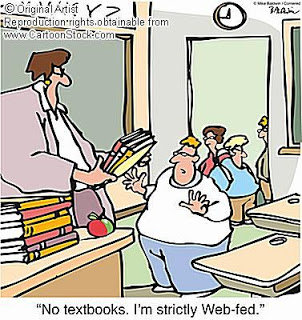
The primary goal of this course is to help you improve your proficiency with current and emerging educational technologies that may enhance your instruction, assessment, and professional productivity. During our time together, we will explore ways to facilitate the use of technology to inspire student learning and creativity. We will learn how to design, develop, and assess digital learning experiences. We will discover ways to model digital-age work and learning. We will practice modeling digital citizenship and responsibility. Finally, we will investigate ways to grow professionally and become connected technology leaders.It has always been my goal to return to school and pursue a doctoral degree in Education. I received my Master’s in Educational Technology from Pepperdine in 2004, and was concerned about diving head first into a program. In talking to a University advisor, I decided to take a graduate course and see if I could succeed and if it was still something I enjoyed. I thought that this class would be great to refresh my skills and also to become familiar with new technology resources. What I have found is that I do still enjoy taking classes and learning new technologies, but will be thinking more about where to go next.
As I recap of this class I thought about the technologies that impacted me the most, either in my classroom or as an Instructional Technology Leader for my district. ISTE standard I was first and reintroduced me to Edmoto, which allows for student reflection and the collaboration, making it easy to find and correct a student’s concept misunderstanding through appropriate and defined reflection prompts. With a one-to-one environment on the horizon in my school district, I am ready for Edmoto as well as Google Classroom to again be at the forefront of the conversation.
ISTE standard II reminded me of the process behind using blogs in my instruction, and reminded me of the little things that make it a true learning tool. I was able to explain how to use it with formal and informal assessments for Sarah, who was in my learning circle. Her concern with how much time and content a teacher would need to keep track of reminded me of how my discussions with other teachers on its uses needed to include more information on assessment.
In standard III the article on Digital Fluency where Briggs & Makice (2011) wrote “…the development and maintenance of digital abilities requires practice. First-hand experience is critical to learning, the process to become fluent demands an investment of time and patience…” reminded me this is not just applicable to the students, but even more for the educator who is trying to use the technology to meet an educational outcome.
Standard IV challenged all of us to be responsible for digital literacy. As pointed out in Digital Citizenship: Addressing Appropriate Technology Behavior, “Technology-infused teaching is becoming more commonplace every year. Technology in the classroom is becoming as transparent as the chalkboard and pencil… technology-infused teaching does not always include teaching about appropriate and inappropriate uses of technology” (Ribble, Bailey, & Ross). It is not just students who need to be taught about rights and responsibilities, but staff and administration too. Misuse needs to be recognized by the teacher and administration where it can be addressed. Each instance can be used as guide on how to design instruction that will not allow students to think that misuse is acceptable.
As the needs for students increase and our profession must change to address those needs through the use of technology. As we found in ISTE standard V, we must become part of an active community of learners and be responsible for our own professional growth. Leadership is needed to create and implement these tools and this class has prepared us for that.
I had a hard time with both WebQuest’s and Digital Storytelling, both technologies felt like I was forcing a technology on my curriculum. While I know not to use technology just to use it; I could use it to help other teachers create real-life experiences and practices in their classes. I ended up making a WebQuest that I will use in my classroom, but with hopes that the community and I can make improvements. The opportunity to learn how it works and what it could provide for our learning community ensures it will gradually find its way into my curriculum, but as of now I have this as another one of my tools.
Overall, I have really enjoyed this class and the teachers that I have interacted with. I am hoping to use my new and refreshed skills that I already use, reminding me of the best ways to help other teachers learn these new tools.
Briggs, C., & Makice, K. (2011). Digital fluency: Building success in the digital age.
Ribble, M., Bailey, G., & Ross, T. (2004). Digital citizenship. Learning and Leading with Technology, 32(1), 6-12.